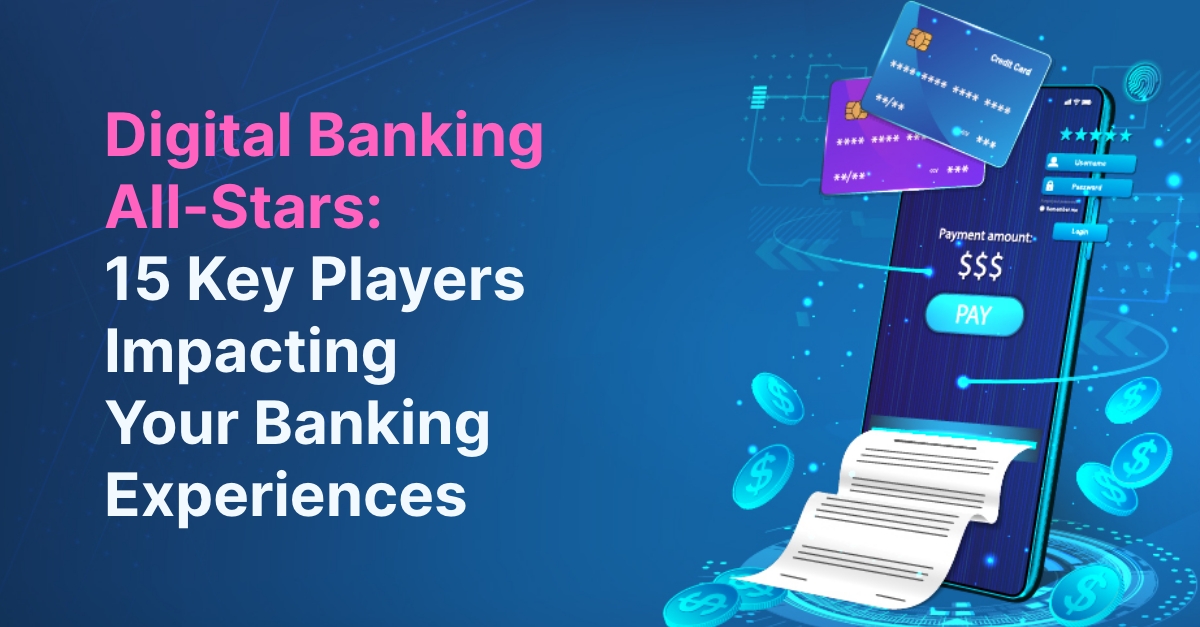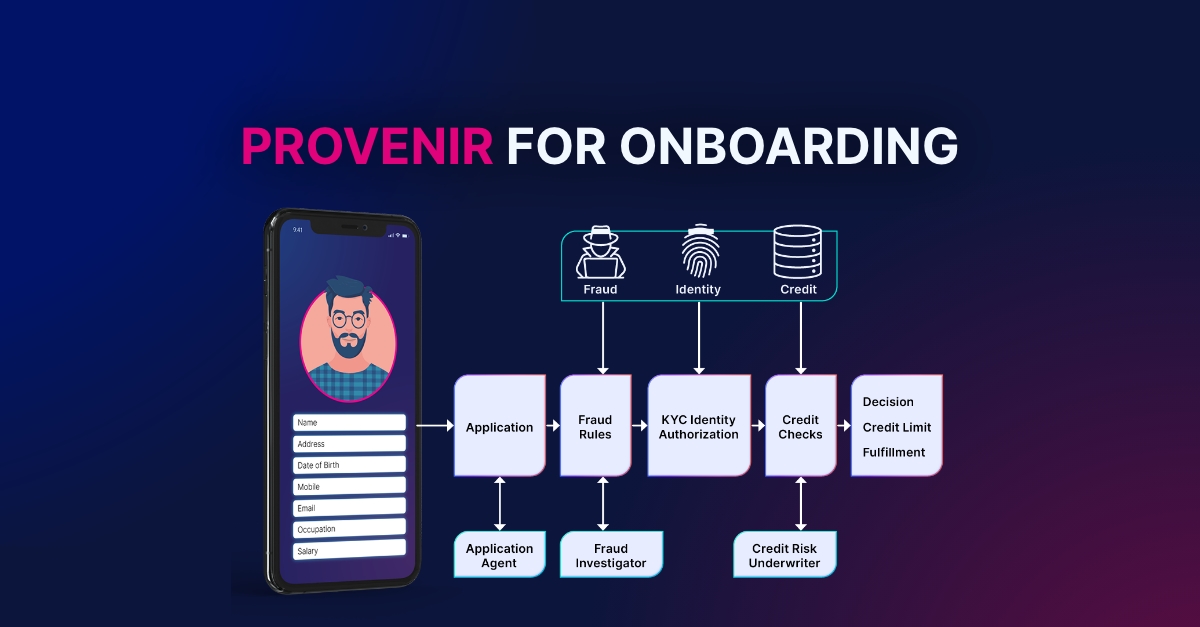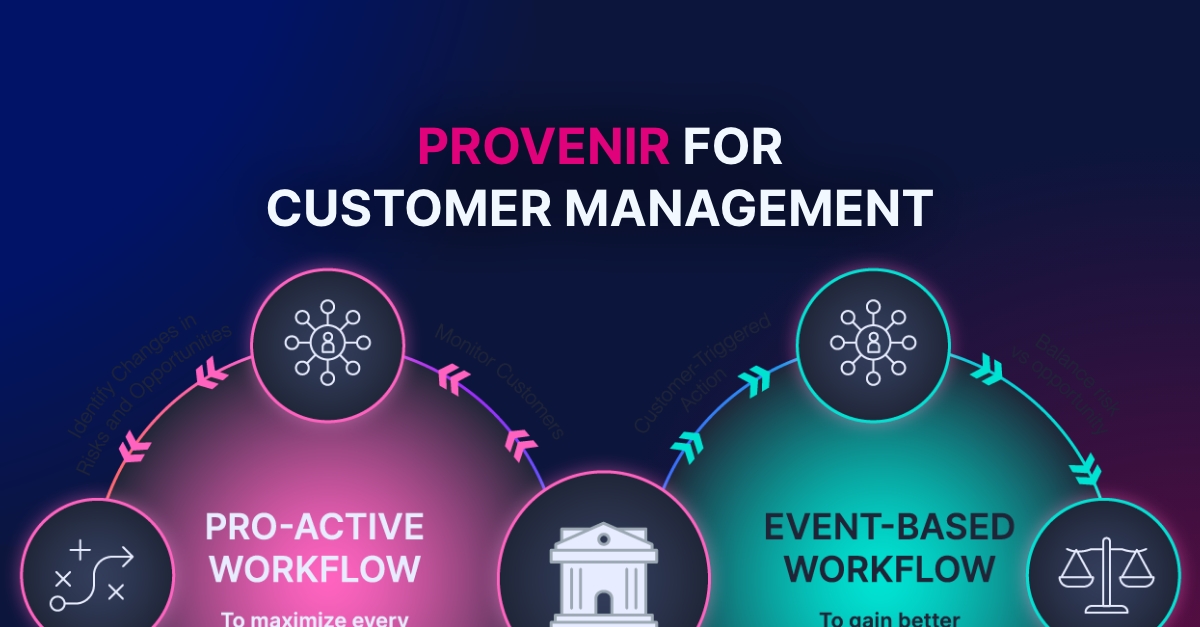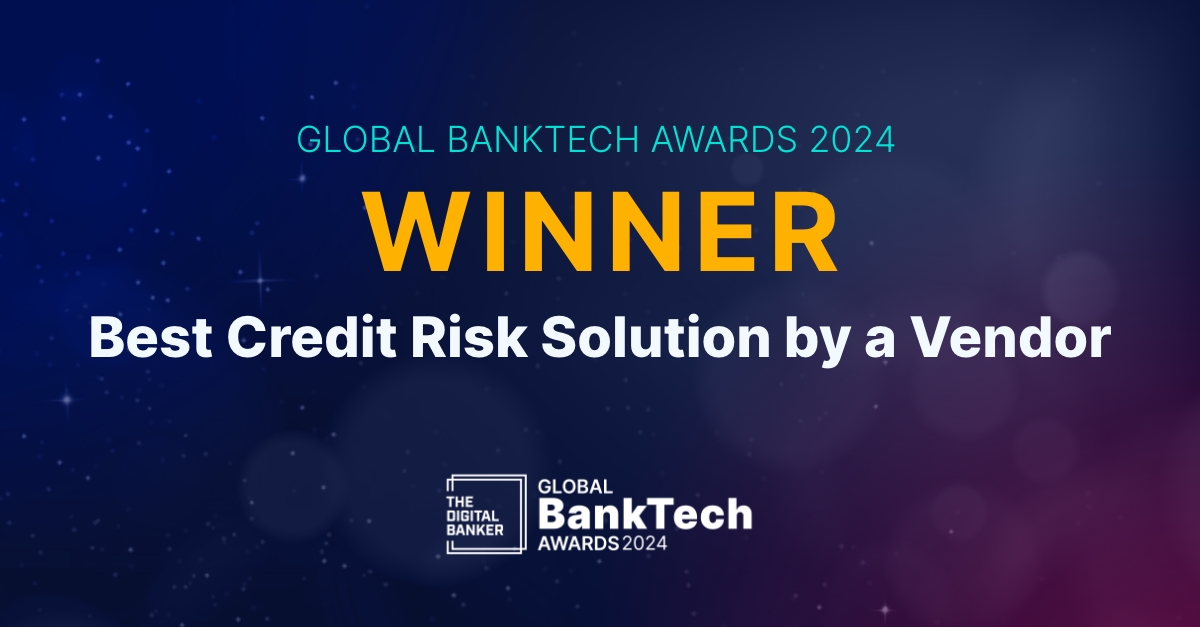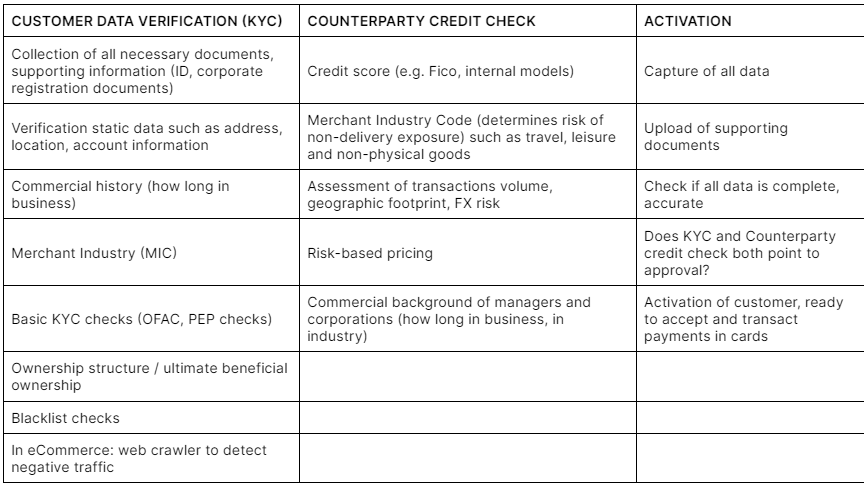Carbon’s Ceci Lopez and Kike Fashola Are Banking on Nigerian Fintech Innovation
00;00;09;26 – 00;00;34;06
Intro
You’re listening to the Disruptor Sessions, The Visionaries Guide to Fintech, a podcast from Provenir. Every episode, we sit down with global thought leaders and innovators to explore the future of fintech., from the technology powering change to the visionaries driving disruption. Now your host, Adrian Pillay.
00;00;34;06 – 00;01;01;05
Adrian Pillay
I’m Adrian Pillay, Vice President of Sales for Middle East and Africa at Provenir, and this is our first podcast episode exclusively focused on Africa. We’ll discuss topics like using data science to support innovation, how to drive adoption of emerging tech in an emerging market, and some of the implications we may not always think of when we talk about AI in risk management.
00;01;02;09 – 00;01;34;29
Adrian Pillay
I’m really excited to have two wonderful guests join me to discuss more about their fintech journeys and how their company’s making an impact in fintech in Africa. My guests today are Cecilia Lopez, who we’ll be affectionately calling Ceci, and Kike Fashola, who are both with Carbon. Carbon is a digital bank headquartered in Nigeria, offering loans, payments, investments and personal finance management solutions to customers across Nigeria.
00;01;36;00 – 00;01;42;09
Adrian Pillay
Ceci and Kike, great having you both join me today and really looking forward to our conversation.
00;01;42;27 – 00;01;45;06
Ceci Lopez
Hello. Thank you, Adrian, for the introduction.
00;01;45;10 – 00;01;46;02
Kike Fashola
Thank you.
00;01;46;18 – 00;02;02;06
Adrian Pillay
To kick things off, can I ask you both to introduce yourselves? Tell us a little bit about your backgrounds and how you came to work at Carbon and would also love to hear about any defining moments, experiences that shaped you into the leaders you are today.
00;02;03;08 – 00;02;33;20
Ceci Lopez
This is Ceci. I’m very happy to be here sharing this conversation with you and Kike. I am the Head of Decisioning at Carbon. I’ve been working with Carbon since 2020, so more than a couple of years now, and I’m responsible for credit risk management and also for data science. I’m an actuary. I have a degree in actuarial sciences but I’ve been working in data science for the past 13 years.
00;02;33;20 – 00;02;49;20
Ceci Lopez
I am very excited about the work we are doing in Carbon to introduce innovative data science, machine learning , and all these new artificial intelligence tools we are seeing out there in the process of decision making in our company.
00;02;50;01 – 00;03;18;26
Kike Fashola
I’ve been working in credit risk management for nine years with seven of those years at Carbon. I have a strong understanding of the credit process from identifying and assessing risk, to developing and implementing mitigation strategies. So in 2014, I joined Carbon as a Credit Analyst. I quickly learn how to use my analytical skills to uncover potential risks and my communication skills to explain those risks to the company’s stakeholders.
00;03;19;09 – 00;03;45;08
Kike Fashola
In 2018, I left Carbon to pursue a new opportunity. However, I rejoined the company in 2019 as a Credit Manager. In this role, I have expanded my responsibilities to include developing and implementing credit risk mitigation strategies. A defining moment that made me become the leader I am today was basically being called back to work at Carbon.
00;03;45;08 – 00;04;09;20
Kike Fashola
When I started at Carbon initially, my confidence level was very low. And after going to other places, being asked to come back. – that built my confidence. Similarly in a male dominated industry, I didn’t allow that fact to intimidate me. I was confident in my skills, my abilities, and not be afraid to stand up for myself and for my ideas.
00;04;09;24 – 00;04;31;06
Ceci Lopez
In my case, I would say it’s hard to identify a defining moment. Right? But what I can say is that during my career, I’ve had great managers and so I’ve learned from great leaders. And I’ve learned from them what it takes to be an effective manager. It’s more of a career path, learning from great managers.
00;04;32;09 – 00;05;01;02
Adrian Pillay
I love that, Ceci. I completely agree with you. A large part of how I too would define the key moments that have helped define me as a leader, would be the experiences and the interactions and the influence that my past managers have had over the years in my career as well. So I love that. I think for my first question – Ceci, this is probably one that you would like to pick up.
00;05;01;02 – 00;05;12;27
Adrian Pillay
What’s your view on disruptors or the disruption happening in financial services, and more so, what does disruption mean to you as a data scientist?
00;05;13;21 – 00;05;45;23
Ceci Lopez
Well, I actually think that the financial services industry is one of the most disruptive industries in the world. All these new technologies – we are having right now an artificial intelligence revolution in the past couple of months. And also all the things we’ve been seeing before, big data, blockchain, these are changing the way financial services are delivered. These technologies are enabling new entrants to the markets -fintech companies – and these new entrants are challenging traditional institutions.
00;05;45;23 – 00;06;16;22
Ceci Lopez
These fintech companies, for example, are offering new products and new services that are more convenient, more affordable than those traditionally offer for the customers. And these companies are using technology to make it easier for customers to manage their finances. So overall, I believe that this disruption in the financial services industry is a positive development and it is leading to more innovation, more competition, which is, at the end of the day, beneficial for for the consumers.
00;06;17;09 – 00;06;38;01
Ceci Lopez
However, this disruption is also creating challenges, right? These traditional financial institutions, for example, are facing increased competition – they need to adapt their businesses to remain competitive. Also and most importantly – and this also applies for fintech, right – we need to invest in new technologies to stay ahead of the curve.
00;06;38;01 – 00;07;17;28
Ceci Lopez
Key disruptors in the financial services – well, I mentioned the fintech companies – we are using technology to offer new financial products and services to the customers. These companies are often more agile, more innovative. That also most of the time translates, and hopefully translates, in lower fees and better customer service. Big data is used by these financial institutions to improve their decision making. Banks use Big Data, these huge amounts of data they collect, even if it’s not really Big Data, to assess the creditworthiness of the borrowers and the insurance as well. They can use data to price insurance policies better.
00;07;17;28 – 00;08;03;17
Ceci Lopez
Artificial intelligence. I mention this is being used by financial institutions to automate tasks. For example, we use it to automate fraud detection, can also be used to automate customer service. Most importantly, to develop new products, new services. Lastly, blockchain. This is technology used to record financial transactions. This technology is secure, is transparent, and it has the potential to create a revolution in the way financial transactions are processed. These are just a few, right? The industry is constantly evolving. We see new technologies emerging all the time. And it’ll be quite interesting to see how the financial services industry will change in the years to come. It’s really exciting.
00;08;03;17 – 00;08;48;07
Ceci Lopez
To answer your question, Adrian, as a data scientist, I’m very happy to be a data scientist at this time, to see all this revolution we are lucky to witness. Disruption means for me as a data scientist, the introduction of new technologies, new business models that challenge the status quo, right? And in the financial services industry, this disruption is being driven by these new technologies. And now artificial intelligence is the main driver, right? We we all need to embrace and learn how to use all these new tools that are now available for us to improve the service we give to our customers and also to make our companies more more efficient.
00;08;48;22 – 00;09;30;07
Ceci Lopez
So I am excited about the potential of this disruption in improving the financial services industry in general. Again, we can use it to automate tasks, fraud detection and customer service, and we can free up human resources. Our team members can focus on on strategic tasks, right? Leave these, all these manual tasks on the side, automate the process, trust the automated process, and move on. Do great things, have more time for innovation, improve our decision making, using all the data that is available to us, and also providing insights into customer behavior to ultimately offer our customers a better service. Right.
00;09;30;26 – 00;09;50;02
Adrian Pillay
Thanks, Ceci.That was a brilliant answer. Thank you so much. I’d love if both you and Kike could maybe elaborate on one of the points that you’d mentioned and share with us your thoughts on how we can use data science and AI to make processes more efficient.
00;09;50;29 – 00;10;17;04
Ceci Lopez
Absolutely. I can think on the top of my head a number of ways in which artificial intelligence, data science, in particular, machine learning, can be used to make processes more efficient in companies in many industries, if not all. The first one is the automation of tasks that are currently being performed by humans. Right? We can now free up human resources to focus on our more strategic tasks.
00;10;17;24 – 00;10;47;22
Ceci Lopez
I mentioned before fraud detection, customer service case, mainly risk assessment. Also predictive outcomes. Data science teams in banking, fintech are often dedicated to or actually dedicate most of their time to predict outcomes. Right? This outcome is customer churn, for example, defaults, and these help our business making better decisions and to avoid risk or at least to meet our risk appetite, right, for our portfolio.
00;10;48;06 – 00;11;16;10
Ceci Lopez
We could, for example, use artificial intelligence to predict what customers are likely to default on their loans. Right. This is this been done for for a few years. Credit risk models are built with machine learning. But right now, the availability of more and more data and more complex machine learning tools and all these AI tools that we’ve seen out there make this process more interesting. And the results and the performance of of the models is better.
00;11;16;10 – 00;11;34;11
Ceci Lopez
Optimizing the processes is not only about automating them. We can also optimize the process in many ways. And this doesn’t only apply to fintech or financial services, right? We can think of supply chain management, manufacturing. This way the business is can reduce cost, they can improve efficiency.
00;11;34;17 – 00;12;09;25
Ceci Lopez
For example, a company can use artificial intelligence to optimize inventory. In this way, they can minimize waste, maximize profits, right? One of the most important ones, I think, is personalizing the experiences for customers. If companies can personalize the experience for their customers, they can improve customer satisfaction, they can increase sales. They can recommend the best products and services to their customers and those are the customers are likely – are more likely to be interested. Um, we – we see this every day, for example, new streaming platforms.
00;12;10;24 – 00;12;43;08
Ceci Lopez
So I think the possibilities are endless. As these new technologies continue to develop, I think we can expect to see even more ways to use these to improve efficiency. In particular in the financial services industry, I can see great potential in fraud detection for financial transactions. For example, we could analyze patterns of customer behavior to identify suspicious activity in customer service, to answer customer questions, to resolve their issues, to provide recommendations.
00;12;43;08 – 00;13;22;28
Ceci Lopez
In risk assessment, we can assess risk in financial transactions, assess the creditworthiness of borrowers, the likelihood of default by creating models with these new tools. And one of the most interesting ones is marketing. We can, and actually are, using AI to better target marketing campaigns. We can analyze customer data to identify potential customers and personalize marketing messages. So these are these are a few of the examples that come to the top of my head on out of the many, many ways in which artificial intelligence can be used to make processes more efficient.
00;13;23;15 – 00;13;34;11
Adrian Pillay
Thanks, Ceci. And just following up on that, how does this make room for innovation today within your business and other fintechs in the markets?
00;13;35;12 – 00;14;03;25
Kike Fashola
Data science and artificial intelligence can make room for innovation by, you know, freeing up human resources. So when tasks are automated, human resources are freed up to focus on more strategic tasks. This can lead to new ideas and innovations. For example, a bank that automates its customer service can free up its customer service representatives to focus on developing new products and services.
00;14;04;09 – 00;14;23;09
Kike Fashola
Another way is by providing insights. So data science and AI can enable experimentation with new ideas. For example, a bank that uses AI to test different marketing campaigns can identify the most effective campaigns and use that information to develop new marketing strategies.
00;14;24;09 – 00;14;45;21
Adrian Pillay
Thanks, Kike. I think indeed, I think we’re living in exciting times and I think data science and AI really creates a platform for all our employees to really reinvent themselves and redefine how they add value and contribute to the broader business. Really looking forward to see what the future has for us.
00;14;45;21 – 00;14;58;04
Adrian Pillay
And Kike, tell us how you approach the adoption of emerging tech in a market where more tested tech like the Internet is still not available countrywide.
00;14;58;04 – 00;15;30;27
Kike Fashola
Adopting emerging technology in a market where more tested technology like the Internet is still not available countrywide is a challenge. I mean, a very big challenge. However, I mean, we tried a pilot program in the past during COVID to extend credit to market women by financing their goods, and they in turn paying us back in comfortable installments. We also provided training and support to the users as we – as we knew this was essential for successful adoption of emerging technology.
00;15;31;07 – 00;15;52;14
Kike Fashola
This helps them in some way to understand how to use the technology, and in the app and to troubleshoot any problems that they encountered. With careful planning and execution, we know we can successfully adopt emerging tech even in the most challenging markets by, you know, starting small, being patient and being flexible.
00;15;53;04 – 00;16;07;06
Adrian Pillay
Thanks, Kike. I read an interesting blog recently and I’d love to hear your perspectives on innovation itself being sometimes risky for financial institutions.
00;16;07;06 – 00;16;15;07
Adrian Pillay
So in the case of emerging technology like AI, what implications are there that may not immediately come to mind?
00;16;16;08 – 00;16;45;02
Ceci Lopez
Well, innovation is often seen as a positive thing. Right. But it can also be risky. Of course, in the case of emerging technology like AI, there are a number of implications that may not immediately come to mind. Like I mentioned, some of the risks that are associated with AI innovation in financial services. For example, data security, of course, artificial intelligence systems rely on large amounts of data to be trained and to operate.
00;16;45;19 – 00;17;05;01
Ceci Lopez
If this data is not properly secured, it could be vulnerable to hacking or other forms of attack. This could lead to the theft of customer data, to financial losses, reputational damage. So we need to be very, very careful about this. Data security should be a top priority.
00;17;05;01 – 00;17;37;21
Ceci Lopez
Another one that is not something that immediately comes to our minds is algorithmic bias. Artificial intelligence systems are trained on data that reflects the biases of the people who created them, who created the algorithm, who collected the data, actually, and who analyzed the results. Right. We build a model – someone is building it, someone has designed the – the data collection process to build that model. And those things introduce bias in the model and this is natural, right?
00;17;37;21 – 00;18;13;01
Ceci Lopez
So but we need to be careful about this. We need to be aware that this is a risk we have and we need to take all the necessary measures to mitigate the risk of putting in production a model that is biased in any way. Right. So this means that artificial intelligence systems can be biased themselves. And the problem behind this is that a biased algorithm, a biased model, can lead to unfair or discriminatory outcomes. Right? So this is why it is important to control the bias.
00;18;13;01 – 00;19;06;20
Ceci Lopez
Another one would be cyber security. AI systems are increasingly being used to automate tasks in financial services, as we’ve been discussing here. And this means that these systems are becoming more and more interconnected and this makes them more vulnerable to cyber attacks. So if an artificial intelligence system is hacked or any system that has custody of customer data, we will have a data security problem, right? And again, the theft of customer data, financial losses, or even the disruption of the financial market itself. Right. So to me, these three risks: data security, algorithmic bias, cyber security, things that should be taken very seriously. And companies need to make sure that they are taking all the necessary actions to mitigate those risks.
00;19;07;11 – 00;19;30;27
Adrian Pillay
Brilliant. Thanks, Ceci. Yeah, indeed. I think it’s quite interesting that we find even in, in today’s environment, you know, we quite often about data breaches in some of the really large organizations around the globe. So I completely agree. I think it plays such a massive role in those steps that organizations need to be taking to safeguard themselves and their customers in the future.
00;19;30;27 – 00;19;34;01
Adrian Pillay
And Kike is there anything else that you’d like to add on that point?
00;19;35;03 – 00;20;00;02
Kike Fashola
So the first point that may not immediately come to mind is regulatory compliance. AI systems are still in their early stages of development and there’s a lack of clear regulatory guidance on how to use them in financial services. This means that financial institutions could face regulatory challenges if they use artificial intelligence systems in ways that are not compliant with the law.
00;20;00;21 – 00;20;24;19
Kike Fashola
Another point is ethical considerations. For example, how will AI be used to make decisions about who gets access to credit? How can it be used to assess risk, be used to personalize financial products and services? These are all important questions that need to be answered before AI can be widely adopted in financial services.
00;20;24;28 – 00;20;37;02
Adrian Pillay
Great. Thanks for that, Kike. Yeah, I think indeed, we are really living in innovative time period and I think it’s really fascinating and we are fortunate to be part of this journey.
00;20;37;02 – 00;20;45;14
Adrian Pillay
But as we look to the future, you know, I’d love to hear what are you both most excited about and where do you think we’re heading?
00;20;45;14 – 00;21;11;19
Kike Fashola
Given my background in risk, I’m most interested in financial technology. This can help to improve risk management, and two are most striking, the first being machine learning for risk assessment. So machine learning, which is used to develop models that can predict the likelihood of certain risks occurring. This helps us to make better decisions about how to allocate our resources and manage risk.
00;21;12;10 – 00;21;41;17
Kike Fashola
The second point is automated underwriting. We use Provenir for our credit risk decisioning platform to automate our underwriting processes. This has helped us save time and to improve the accuracy of our decisions. I mean, we are able to analyze and prioritize financial data, make credit assessments. This allows us to make better decisions about who we lend money to. And the fact that it’s- I mean, the flexibility aspect of it is most striking.
00;21;41;28 – 00;22;01;24
Kike Fashola
I mean, Provenir is a flexible platform that allows us to modify rules as we wish. We are able to check rules at any time of the day. This gives us the ability to tailor the platform to our specific needs. So yeah, by using these technologies, we have been able to improve our ability to identify, assess, and mitigate risk.
00;22;02;24 – 00;22;39;07
Kike Fashola
So, we know AI is being used to develop new financial products and services that are more personalized, efficient and transparent. For example, AI-powered robo advisors are becoming increasingly popular and AI is being used to develop new ways to assess risks and to price insurance policies. AI can be used to combat financial crime by detecting fraudulent transactions and by tracing the movement of money. This has the potential to make the financial system more secure and to protect people from fraud, which is very important.
00;22;39;20 – 00;22;41;12
Adrian Pillay
And Ceci, anything to add from your side?
00;22;42;09 – 00;23;03;14
Ceci Lopez
I have two off the top of my head. First one is the rise of decentralized finance – systems built on blockchain technology. These allow people to lend, borrow, invest money in a more decentralized way, and it has the potential to make financial services more accessible and more affordable for for people around the world.
00;23;03;14 – 00;23;28;08
Ceci Lopez
Also, the use of artificial intelligence to improve financial inclusion. Definitely. AI can be used to improve financial inclusion by making financial services more accessible to people, people who are currently underserved or not served at all by the financial system in their countries. We could, for example, develop new ways to verify identity and provide financial services to people in rural areas, for example.
00;23;28;08 – 00;23;53;21
Ceci Lopez
And these are just a few of the most exciting things – what Kike mentioned, these couple I mentioned – the most exciting things to come in terms of fintech services, disruption and all these artificial intelligence revolution. I believe that these technologies have the potential to revolutionize the financial services industry, to make financial services more accessible, more affordable, more transparent for people around the world.
00;23;54;04 – 00;24;13;17
Ceci Lopez
And in terms of where I think we are headed, I believe that we are moving towards a future where financial services are more personalized, more efficient, more transparent, and AI will play a key role in this future. And I am very excited to see how it is used to improve the lives of people around the world.
00;24;14;12 – 00;24;40;29
Adrian Pillay
Brilliant. Indeed. Looking forward to the time when access to financial services is tailored to the needs of each and every consumer that’s made available to them when they need it and more importantly, where they need it. I’m excited, as I’m sure we both of you are, to be part of their journey of bringing and providing access to financial services to every person all over the world.
00;24;40;29 – 00;25;00;24
Adrian Pillay
And it looks like we are nearing the end of our session. Ceci and Kike, it was an absolute pleasure having both of you on today and I’ve thoroughly enjoyed our conversation. Thank you both for taking the time out to share your valuable insights and for contributing to The Disruptors Sessions: The Visionary’s Guide to Fintech.
00;25;00;24 – 00;25;12;23
Ceci Lopez
Thank you, Adrian. We are very happy to be here. It was a privilege for us to have your attention and our audience attention and share our thoughts, our insights with you. Thank you very much.
00;25;12;23 – 00;25;13;10
Kike Fashola
Thanks.
00;25;14;00 – 00;25;46;19
Adrian Pillay
Thanks to all our listeners who tuned in to our podcast, The Disruptors Sessions: The Visionary’s Guide to Fintech. You can find more information about Carbon at www.getcarbon.co. We hope you’ve enjoyed today’s episode. And if you want to hear more, explore all our episodes on your preferred podcast platform or listen on our website at provenir.com. We look forward to you tuning in again to our next episode of the series, and until then, take care.






